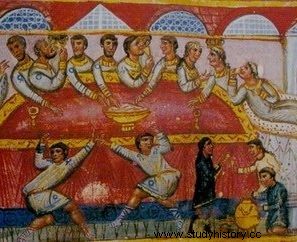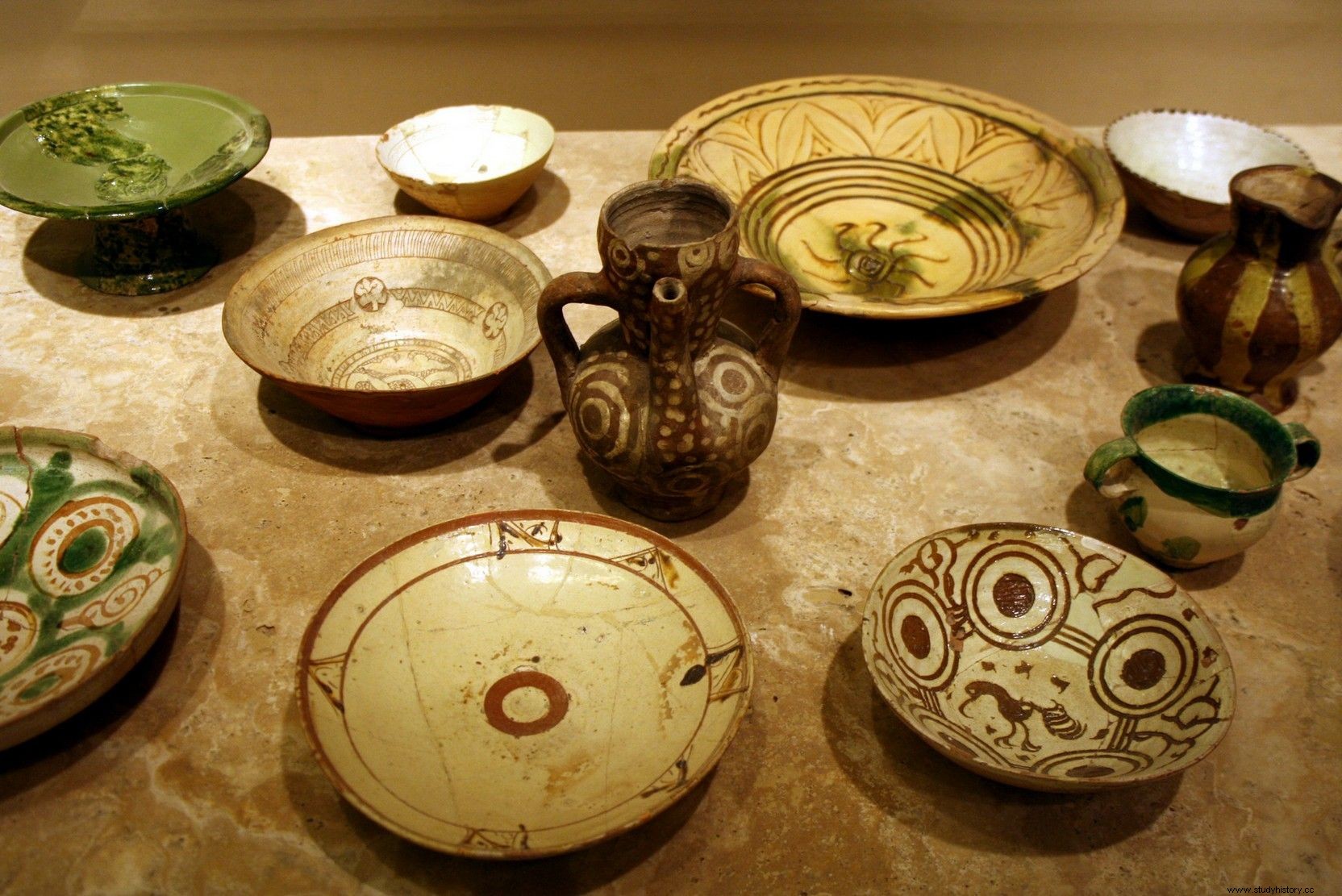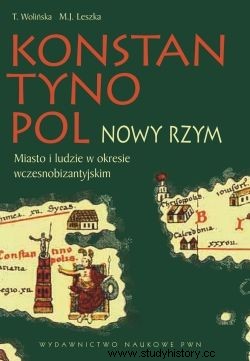While shopping today, I thought for a moment about the richness of the offer of contemporary grocery stores. The basket includes an iron breakfast set - bread, milk and egg, and also mineral water, cheese and butter. Taking half of these products out of store refrigerators, I decided that the man who invented the refrigerator should definitely get the Nobel Prize. It wasn't that easy in the past.
Food spoiled very quickly and you had to deal with it somehow. The most difficult, of course, was in the Mediterranean climate, where the temperatures are "a bit" unfavorable for this practically all year round. One thing must be admitted - the inhabitants of the lands within its reach had to think about this problem quite well. We know one thing:they did not die of hunger.
Sometimes soup, sometimes bread, that is grain products in Byzantium
While reading a collective work by Polish Byzantines recently published by PWN, I came across a very interesting chapter devoted to "the flavors of Constantinople" by Maciej Kokoszka. Based on the author's arguments, I will try to bring you closer to the mysterious world of local tables at the turn of antiquity and the Middle Ages.
Let's take the contents of my basket mentioned above as a basis. First, grain and the most popular product obtained from it:our daily bread.

In order to have enough food to eat, you must first work on the farm. Here are vineyard workers in an 11th century performance (source:public domain).
During the Byzantine era, there was an extensive system of supplying the capital with various types of grain, the most important of which was wheat. Its grain was used in the kitchen in many ways:for example to prepare… soup. The grains were thrown into the water, seasoned with salt and boiled until tender (it turned into the most ordinary white cake with an undefined taste, but quite nutritious).
Barley was consumed primarily by the poorer sections of the society, who did not receive wheat allowances from the state. The most popular dish made from it was the so-called m ádza :simply, kneaded barley flour with the addition of liquids and flavors. It was used, inter alia, as a food supply, stored for the duration of a crop failure.

A Byzantine feast and a bread bowl on the table.
It was made in the shape of a loaf, dried and placed in the pantry under appropriate conditions. Despite its hardness, it could be eaten almost any time, just like today's biscuits. With m ádza it was also possible to prepare something like a soup, both salty (with oil, salt, leek, dill) and sweet (e.g. with honey).
Bread was also baked with this universal mixture. It was kneading m ádza with one of the types of barley flour, formed into a flat cake and put it into the oven. And voilà ! We have bread. Now they would have to be smeared with something.
The perishable cholesterol sower
The Byzantine people associated butter with the barbarians from the north rather than the civilized world of the Romans. We, on the other hand, cannot imagine bread without it. In the Mediterranean, this source of wild amounts of cholesterol was not widespread (not that it was atherosclerosis or other such ailments). The milk provided by the cows there was simply too lean for its production.

And what to eat on? For example, on such a Byzantine tableware from around the 11th century (photo:Giovanni Dall'Orto).
Moreover, there were no known methods of removing milk residues from butter, which made it spoil quickly. Attempts were made to avoid this by salting the finished product, but the nutritionists of the time frowned upon it and considered such a mixture extremely unhealthy. So let's listen to the doctors and skip spreading our bread. However, let's not give up dairy products completely. Time for milk.
One of the basic questions that are asked of toddlers (next to "do you prefer mommy or daddy?" And "how does a kitten do? Meow!") Is:"what does fudge give?". Of course, the answer is milk, and we'll deal with that now. I mentioned earlier the problems related to food storage in the Mediterranean climate.
Fresh milk is one of the products that reacts the fastest to high temperature and stops being fresh quickly. That is why it either went to the tables of the rich, who were delivered it expressly, or poor people ate it, right after milking their own, full-time mug. Due to the climatic conditions prevailing in Byzantium, sour milk or whey (considered - not necessarily - an exceptionally strong laxative) was most often drunk.

And since we are moving to dairy products, this is what moretum looked like, a cheese loved in the Roman Empire (modern reconstruction, photo:Bullenwächter, license CC BY-SA 3.0).
Drinking milk was very widespread, and giving it up, for example in the fasting period, was offered to God. Anyway, the white, velvety liquid itself was brought by Christians to temples as one of the gifts of the altar. It is also worth adding that the inhabitants of Byzantium did not limit themselves to only cow's milk.
Sows, goats, sheep, donkeys and mares were milked. When consuming milk, it was most often mixed with salt, or with wine or honey. We can conclude that the milky curiosity has been at least partially satisfied, so it's time to move on to the staple dairy product, cheese.
Our oscypek is a piece of cake?
As one of the authors of the book "Konstantynopol. Nowy Rzym ”Maciej Kokoszko, in the Mediterranean cuisine, cheese was one of the basic foods. It is known from the preserved sources that it was hosted on the tables of all strata of society. Thanks to its production, the waste of sour milk was avoided.

The article is based on the book "Konstantynopol. New Rome:City and People in the Early Byzantine Period ”(ed. M.J. Leszka and T. Wolińska, PWN 2011).
It was served to people of all ages and abilities, distributed to soldiers, and even sent to friends as a… gift. As a result, cheese became the staple ingredient of consumed bread.
It is worth mentioning one more cholesterol sower who was present at the Byzantine tables. All poultry does not need much space to live, and therefore in the alleys of Constantinople there was enough space for breeding chickens, geese and other screeching birds, and as you know, where the hens are, there are also fresh traces of their stay (I do not mean chicken droppings, of course).
Eggs were a readily consumed product, and chicken was the most popular. However, those abolished by other species, including wild birds, were also not denied.
One of the dietitians of the time emphasized that they should be prepared in such a way that both the yolk and protein remain liquid, which personally does not convince me much. In any case, eggs were treated both as a separate dish and used as side dishes for more complex dishes.
A bucket of cold water
I left the water for myself at the end. The average person consists of 75% of it, and in Byzantium it was distinguished as many as five types:rain, spring, well, river and lake. This life-giving liquid was the most consumed liquid there. It was served on the tables of the aristocracy and the poor, and it was necessary for both the army and civilians. It was eagerly drunk cold, freshly taken, but also heated in special vessels.

Supper in the Byzantine style
Byzantine doctors dealt with it, trying to use its properties for medical purposes. The inhabitants of Constantinople widely valued rainwater, which from the perspective of modern pollution is, to put it mildly ... abstract.
But, ladies and gentlemen! Lest it were - methods of water purification were known in Byzantium. Most often they were used by the military, which had to make use of springs gushing out in strange places while moving around the country. Then the liquid was treated using the slope, the system of pits and the filtering properties of the clay. Admittedly, clever.
As it turns out, the menu of the inhabitants of Constantinople who lived over 1000 years ago does not differ much from ours today. Maybe only with the exception of meat consumption. Eating them in Mediterranean conditions was sometimes like a lottery.
Due to the lack of refrigeration, the meat went bad very quickly. That is why it was very expensive and it was hosted most often at the tables of the rich. The poorer classes also had some access to it, although it was more profitable for them to milk the cow than to murder it. But never mind. Time to eat breakfast!
Source:
Trivia is the essence of our website. Short materials devoted to interesting anecdotes, surprising details from the past, strange news from the old press. Reading that will take you no more than 3 minutes, based on single sources. This particular material is based on:
- Constantinople. New Rome:City and People in the Early Byzantine Period, edited by M.J. Leszek and T. Wolińska (Polish Scientific Publishers PWN, 2011).
